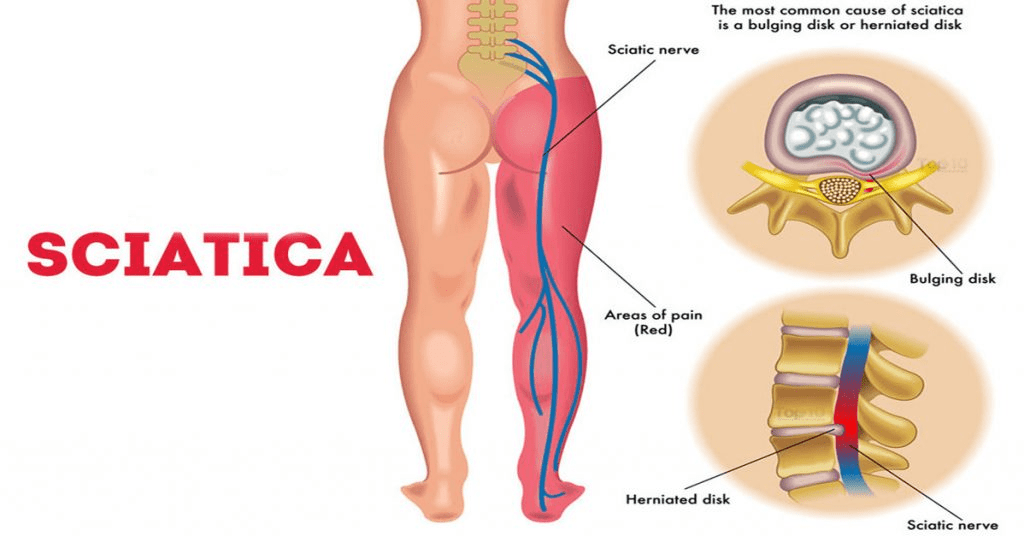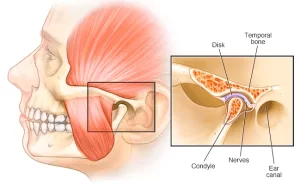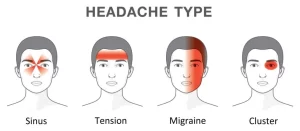Sciatica refers to pain that radiates along the path of the Sciatic nerve which is the longest and widest nerve in the human body that branches from the lower back, through the hips and buttocks, down each leg, and ending just below the knee. The sciatic nerve controls several muscles in the lower legs and supplies sensation to the skin of the foot and the majority of the lower leg. Sciatica typically affects only one side of the body.
Sciatica occurs when the sciatic nerve becomes pinched usually by a herniated disk in the spine or by an overgrowth of bone (bone spur) on the vertebrae. More rarely, the nerve can be compressed by a tumor or damaged by a disease such as Diabetes.
Risk factors of Sciatica may include:
– Age. Age-related changes in the spine such as herniated disks and bone spurs are the most common causes of Sciatica.
– Obesity. By increasing the stress on your spine, excess body weight can contribute to the spinal changes that trigger Sciatica.
– Prolonged sitting. People who sit for prolonged periods or have a sedentary lifestyle are more likely to develop this.
– Diabetes. This condition which affects the way the body uses blood sugar increases the risk of nerve damage.
Symptoms of Sciatica pain include a constant burning sensation or a shooting pain starting in the lower back or buttock and radiating down the front or back of the thigh and leg and/or feet. The pain may be accompanied by numbness in the back of the leg and sometimes tingling or weakness may also be present. Pain typically affects one leg and often results in a feeling of heaviness in the affected leg. Posture-induced symptoms that worsen while sitting, trying to stand up, bending the spine forward, twisting the spine, lying down, or while coughing may also be present.
Physical therapy can help with treating Sciatica. Treatment program will focus on reducing inflammation and pain along with improving the physical function. Apart from manual therapy, usage of ice therapy, heat therapy, therapeutic ultrasound therapy, and electrotherapy will be incorporated. Personalised exercises to strengthen the muscles of the abdomen, lower back, hips, and legs will also be prescribed by your therapist. As treatment progresses, functional training and gait training will be introduced to manage the pain. If in doubt, seek professional advice
It is always imperative to protect the back from the condition with these tips:
– Exercise regularly to keep the back by focusing more on the core muscles in the abdomen and lower back that are essential for proper posture and alignment. A physical therapist can recommend specific exercises for you.
– Maintain proper posture when sitting by choosing a seat with good lower back support, armrests, and a swivel base. Consider placing a pillow or rolled towel in the small of the back to maintain its normal curve. Keep the knees and hips level.
– Use good body mechanics. When lifting something heavy, let the lower extremities do the work by keeping the back straight and bending only at the knees. Avoid lifting and twisting simultaneously.
If in doubt, seek professional advice.
Check out our popular articles: Diastasis Recti, Tight Back Muscles, Irritable Bowel Syndrome (IBS), Temporomandibular Joint (TMJ) Dysfunction, Tennis Elbow, Wrist Tendon Injury, Sciatica, Whiplash, Hernia, Herniated Disc (Slipped Disc).




